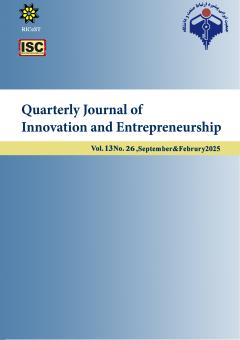Explanation of The Theoretical Model in Order to Improve the Identity of The Buildings’ Facades in The Street View(Case Study: Valiasr Street, Tehran)
Subject Areas : Promoting and developing entrepreneurial culture
Mahsa Hajmaleki
1
![]() ,
Khosro Daneshjo
2
*
,
Khosro Daneshjo
2
*
![]() ,
Azadeh Shahcheraghi
3
,
Azadeh Shahcheraghi
3
![]()
1 - Ph.D. student, Department of Architecture, Islamic Azad University, Science and Research Department, Tehran, Iran
2 - Assistant Professor of Architecture Department, Tarbiat Modares University, Tehran, Iran.
3 - Associate Professor, Department of Architecture, Islamic Azad University, Science and Research Unit, Tehran, Iran
Keywords: Physical Identity, Valiasr Street, Tehran, Urban Views, Urban Landscape,
Abstract :
The concept of urban identity in the process of cognition and perception presents us with a multidimensional and complex phenomenon. The physical identity of cities has become an influential category in city life. For this reason, in order to promote identity, this research tries to find the roots of the existing relationship in the field of urban landscape and facade of buildings, and after extracting and analyzing key parameters for the feasibility of approaching identity in this space, to compile a theoretical model with practical criteria for coordination. For the analysis, library sources were studied and then the effective factors in the facades with identity were investigated, then the existing buildings in Valiasr Street were analyzed to measure the obtained factors. A qualitative and quantitative case study method has been carried out to obtain information about the changes in the appearance of buildings over time. For quantitative analysis of data, software (SPSS) was used to provide statistical analysis of data, analysis and one-way analysis of variance (ANOVA) technique and factor analysis using varimax rotation were performed. The results show that each period of the evolution of Valiasr Street in Tehran has faced different types of modernity forces and finally, the most influential parameter on the enhancement of architectural identity on the facade of the buildings in the street view has been presented in the theoretical model

